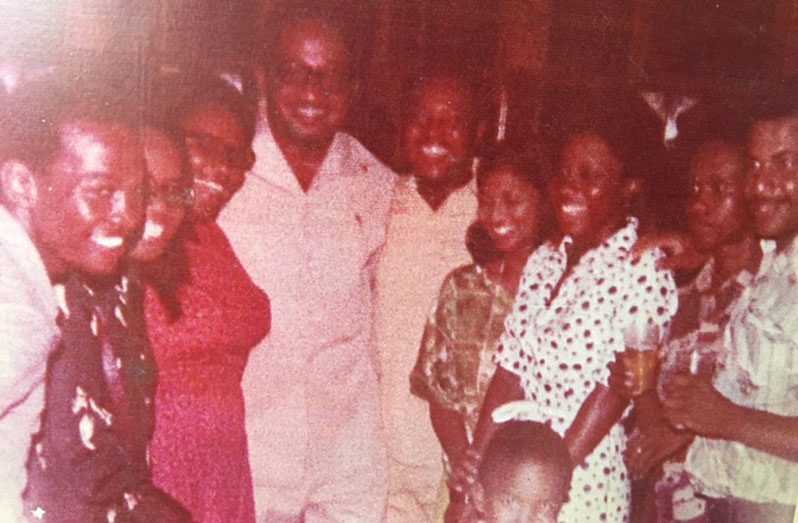By Francis Quamina Farrier
When someone we know dies, especially suddenly, we always reflect on the last time we saw them alive. In this article which is about the 36th death anniversary of President Forbes Burnham, I will reflect not only on what was the last time I saw him alive but comments I recently garnered from Guyanese over three decades later.
I last saw President Burnham alive on Saturday, August 4, 1985. It was a special occasion for me and scores of other citizens of Georgetown, those with a special interest in the history of our beautiful Garden city. Murray Street in the city ward of South Cummingsburg, was having that name changed from honoring the colonial governor, Sir John Murray, who owned slaves in the colony, to that of the enslaved African, Deacon Quamina an enslaved African of the Bethel Congregational church at Le Resouviner on the lower East Coast, Demerara. He was from Ghana in West Africa and a carpenter by trade. History and Burnham had decided that Governor Murray was not the kind of person to have his name perpetuated on a street. He was known to be exceedingly cruel to the non-whites and he had actually owned slaves. And so, at a special ceremony which was held at the corner of Carmichael and (then) Murray Streets in the South Cummingsburg ward of the city, the name “Murray” was officially removed and replaced with the name “Quamina.”
At the event, I was taking very close attention to the president as I observed that he was not in the very best of health. He was immaculately dressed as usual for the event. However, there were two things which I had observed on that Saturday afternoon as the street name-change ceremony progressed. It was the highly polished boots which the president wore. Also, the beautiful smoke rings which he made as he puffed away with satisfaction on what I believed was a Cuban cigar.
In a survey which I recently took, nurse by profession, former Mayor of Georgetown, Patricia Chase Green in a comment stated, “I thank him for the opportunity to serve in the Guyana National Service.” Leroy Nelson pointed out that “He installed in us a sense of individual and collective self. Today, some are still struggling to discover who they are. The national project is still incomplete.” Theresa Arifa stated that “He did many good things, but the bad cast a shadow on the good he did. Especially bankrupting our country.” Joycelyn Morian shared the view that “He was unable to get more Guyanese to understand that if Foreigners have to come to develop Guyana, whatsoever is developed will not be for ordinary citizens. He had a vision to convert all of the National Service Centres to Sustainable towns.” Earle Lambert had this to say; “The good things he did outweighed the bad. For example, the Linden/Soesdyke Highway, the Demerara Harbour Bridge, the paving of the East Coast Demerara highway, the construction of the Canje Bridge, the construction of the National Cultural Centre, and I can go on and on. He also taught us self reliance – that is, that we can use locally grown fruits in many ways such as making cakes. Most of all, I love listening to his speeches. He was an eloquent speaker, one who spoke off the cuff, and his pronunciation was great.” “I was too young to love or hate him,” said Chabi Gajadar, “However, I do appreciate that he was a visionary…in his attempt to make us self-sufficient. I watched my mother lead her circle of women during that time with good, strong spirit.” Though he never judged politicians by their accomplishments, Rick Solar said of Burnham, “Was always awed by the speeches and political savvy of LFSB.” A recommendation by Errol Brewster is that “We should establish libraries to elucidate all their regimes. Be a tremendous benefit to maturing the political culture of the nation.” Although a political adversity of President Burnham, Wazir Mohamed said that “At the moment of his death, we placed our adversarial relationship aside, and Kwayana, Roopnarine, and myself walked past his coffin as he lay in state at the National Cultural Centre.”
As Guyana’s history continues to unfold, and many of those who knew President Forbes Burnham personally continue to follow him into eternity, there will remain only those who will learn of him only by books and whatever is written or recorded.
One such item of Burnham history should have been the film documentary entitled, “A man of the people” which I worked very hard on – writing the script, interviewing President Burnham at the residence and publishing a film documentary with a bright and talented team of producers. My understanding is that in late 1992, that film documentary was allegedly dispatched from the archives of the Ministry of Information and sent to the incinerator on Princes Street in Georgetown and allegedly burnt, along with many other film and audio documentaries and periodicals. That was the period before video. As such, that Burnham film documentary and so many others containing aspects of our country’s history are lost forever.












